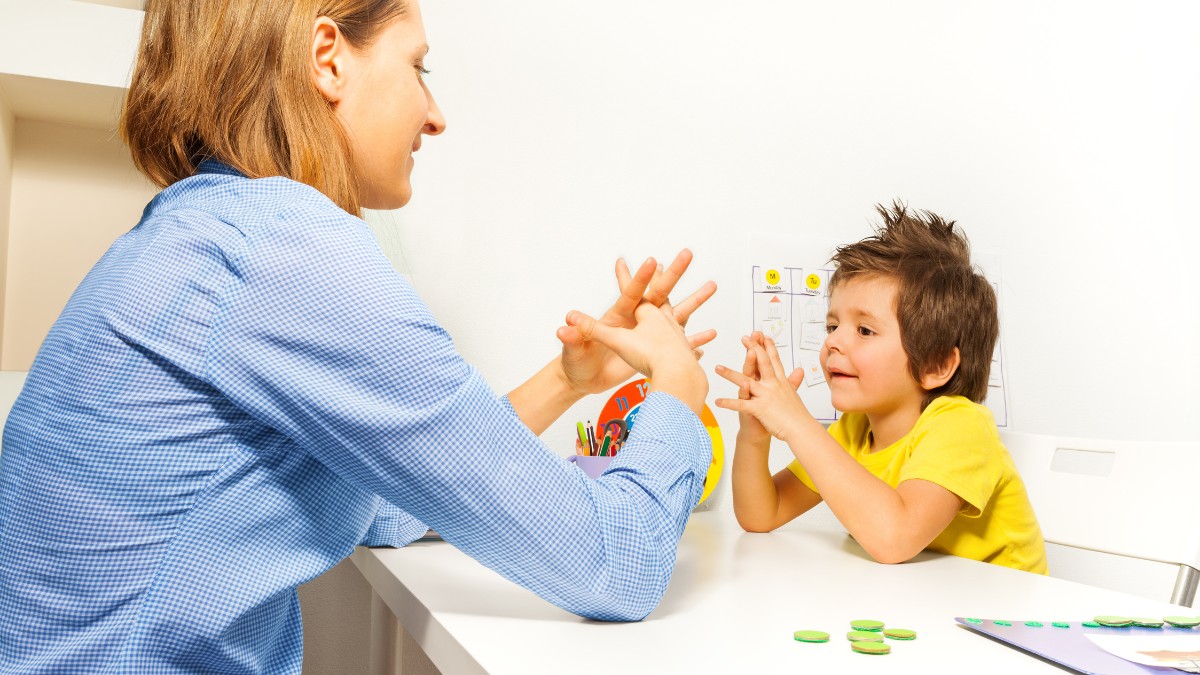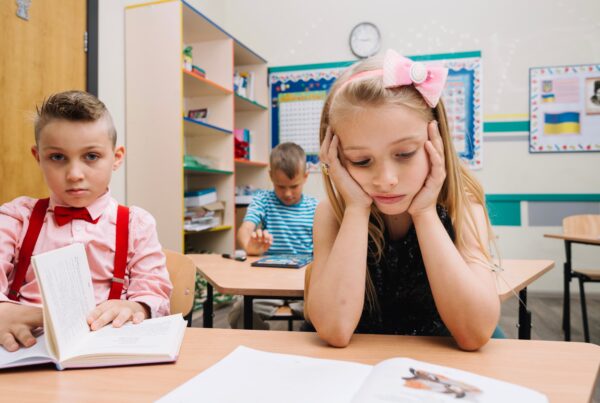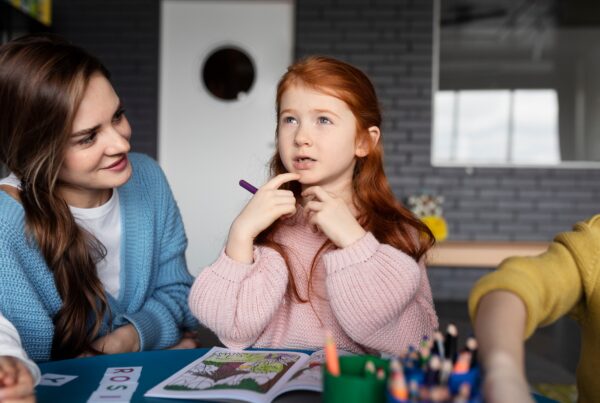Key Points:
- Modeling in ABA therapy is a teaching method where behaviors are demonstrated for the learner to imitate.
- It is highly effective for teaching communication, social, and daily living skills.
- There are different types of modeling, including live modeling, video modeling, and peer modeling.
Ever notice how kids pick up habits just by watching? That’s modeling in action. In ABA therapy, modeling is a structured way to teach new behaviors—whether it’s social skills, daily routines, or communication. By observing and imitating, children gain confidence in real-world situations, making learning more engaging and practical.

What is Modeling in ABA Therapy?
Modeling in ABA therapy is a technique where a therapist, parent, or peer demonstrates a desired behavior, allowing the child to observe and imitate it. This method is especially useful for teaching skills that require visual guidance, such as social interactions, play behaviors, and daily movements.
For example, if a child is learning how to greet others, the therapist might wave and say “hello” to model the behavior. The child then observes this interaction and is encouraged to repeat it. Over time, with reinforcement and repetition, the child learns to use the greeting independently.
Why is Modeling Effective in ABA Therapy?
Modeling is widely used in ABA therapy because it leverages natural learning processes and can be adapted to various skill levels. It aligns with the way children naturally learn. Instead of relying solely on verbal instructions, it provides a visual and interactive example that is easier to understand. Here’s why modeling is an essential tool in ABA therapy:
- Supports Visual Learners: Many children, especially those with autism, process information better when they see it rather than just hearing it. Modeling provides a clear visual guide.
- Reduces Anxiety Around New Skills: Watching someone else perform a task first helps children feel more comfortable before attempting it themselves.
- Encourages Natural Imitation: Children with autism sometimes struggle with imitation, a skill that is essential for learning. Modeling encourages them to mimic behaviors in a structured way.
- Increases Retention: When children see an action being performed, they are more likely to remember it compared to just hearing about it.
- Applicable to Various Skills: Whether it’s social greetings, emotional regulation, or hygiene routines, modeling can be used to teach a wide range of behaviors.
What Are the Different Types of Modeling in ABA Therapy?
Despite their effectiveness, not all modeling techniques are the same. ABA therapists may use different types depending on the child’s needs and learning style. Here are several common modeling types used in ABA therapy.
1. Live Modeling
In live modeling, a therapist, parent, or peer demonstrates the desired behavior in real time. This is commonly used for skills like:
- Social interactions (greeting others, taking turns)
- Daily routines (brushing teeth, setting the table)
- Academic tasks (writing letters, solving puzzles)
Live modeling is effective because it allows for immediate feedback and correction.
2. Video Modeling
Video modeling involves showing a pre-recorded video of someone demonstrating the desired behavior. This method is particularly useful when:
- The child prefers screen-based learning.
- A specific skill needs to be broken down into steps.
- The therapist wants to use multiple examples for consistency.
Studies suggest that video modeling is highly effective for teaching communication and social skills.
3. Peer Modeling
Children often learn best from their peers. Peer modeling involves having another child demonstrate the behavior, making it feel more relatable. This is often used for:
- Play skills (sharing, cooperative games)
- Classroom behaviors (raising a hand, following instructions)
- Emotional regulation (using coping strategies)
4. Self-Modeling
In self-modeling, the child watches a video of themselves successfully performing a skill. This is great for building confidence and reinforcing positive behaviors.
Modeling isn’t just about demonstrating a behavior—it involves structured steps to ensure the child successfully learns and applies the skill. Here’s how it typically works:

Modeling ABA Examples in Real Life
To understand how modeling is applied, let’s look at some practical modeling ABA examples in everyday situations:
- Teaching Greetings: A therapist waves and says “hi.” The child is encouraged to copy the action. Over time, they begin to greet others independently.
- Improving Play Skills: A peer models how to build a block tower. The child watches and then tries to do the same.
- Developing Hygiene Habits: A parent models proper handwashing by demonstrating each step (turning on water, applying soap, scrubbing). The child follows along.
- Enhancing Communication: A therapist shows a child how to request a toy by saying, “Can I have the truck?” The child then tries to repeat the request.
- Emotional Regulation: A therapist models deep breathing when feeling frustrated. The child learns to use this technique when upset.
These examples show how modeling can be applied to a wide range of skills, making it a versatile and powerful technique in ABA therapy.
Partner with Crown ABA for Expert ABA Therapy
Understanding how modeling works in ABA therapy is crucial for parents who want to support their child’s development. Whether it’s learning social skills, communication, or daily routines, modeling provides a structured and effective way to teach new behaviors.
At Crown ABA, we specialize in personalized ABA therapy in Maryland tailored to each child’s unique needs. Our expert therapists use evidence-based techniques, including modeling, to help children gain confidence and independence.
Contact us today to learn more about how ABA therapy can make a difference in your child’s life!





